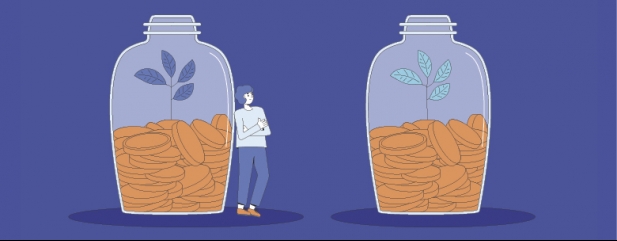Archived article
Please note that tax, investment, pension and ISA rules can change and the information and any views contained in this article may now be inaccurate.
Help, I'm concerned about the pension lifetime allowance trigger?

I will be 55 in 2022 and expect to have a pension pot of around £1.5 million. I intend to continue with self-employed part-time work (£30,000 per annum) for the next five years but would like to access the 25% lump sum to pay off some outstanding debt.
However, I am concerned about the lifetime allowance trigger. I would be happy to take 25% of the £1,073,100 lifetime allowance and move the remainder into drawdown. But not sure how this works, do you need to have two pension pots?
Also how is tax applied in the future if there are two pots if there was further growth? I am a bit confused!
Paul
Tom Selby, AJ Bell Head of Retirement Policy says:
Don’t worry Paul, you aren’t the first person to be confused by the lifetime allowance and you most certainly won’t be the last!
As you mention in your question, the UK lifetime allowance is £1,073,100 and will remain at this level until 2025/26. The lifetime allowance caps the amount you can save tax efficiently in a pension over your lifetime.
However, anyone who has applied for one of numerous ‘protections’ may be entitled to a higher lifetime allowance, although there are conditions associated with retaining these protections. You can read more about lifetime allowance protections here.
The maximum tax-free cash someone can take over their lifetime is a quarter of their lifetime allowance. Based on the current standard £1,073,100 lifetime allowance, the maximum tax-free cash you could take today is capped at £268,275.
You don’t have to take all your tax-free cash at once if you don’t want to, and you certainly don’t need to create a second pension pot. Savers often opt for ‘partial crystallisation’, taking the tax-free cash they need today and allowing the remainder to grow tax-free within their pension.
One of the reasons people do this is to keep as much money as possible in their pension, where it won’t usually count towards their estate for inheritance tax (IHT) purposes.
CRYSTALLISATION EVENT
To access some or all your available tax-free cash, you’ll need to ‘crystallise’ another part of your fund.
This just means choosing a retirement income route such as drawdown. Taking both tax-free cash and putting your pension into drawdown will each trigger a lifetime allowance ‘test’ and use up a percentage of your lifetime allowance.
Take, for example, someone with a £100,000 pension pot and a £1,073,100 lifetime allowance. If they wanted to take their maximum £25,000 tax-free cash, they might put the remaining £75,000 into drawdown.
Taking the £25,000 tax-free cash would use 2.32% of their available lifetime allowance, while putting £75,000 into drawdown would use 6.98%.
Alternatively, if they only needed £5,000 of tax-free cash, they could crystallise £20,000 putting £15,000 in drawdown, with the remaining £80,000 of the fund – including the 25% tax-free cash element – able to grow within the ‘uncrystallised’ part of the pension.
FUTURE GROWTH
A lifetime allowance test will also be carried out at age 75 or on death if you die before age 75. This is intended to capture any funds that have not yet been crystallised and growth on the crystallised portion.
Let’s go back to the earlier example of someone with a £100,000 pension who took £25,000 tax-free cash and put the remaining £75,000 into drawdown. If their drawdown fund then grew to £200,000 by age 75, the £125,000 growth on that portion would also be tested against the lifetime allowance at age 75.
Assuming the lifetime allowance was still £1,073,100, this would use up a further 11.64% of their available lifetime allowance.
That means, when taking into account all benefit crystallisation events, they will have used 20.9% of their lifetime allowance.
Given the importance of a decision to access your pension – not to mention the complexity – you should seriously consider speaking to a regulated financial adviser to discuss your options.
DO YOU HAVE A QUESTION ON RETIREMENT ISSUES?
Send an email to asktom@sharesmagazine.co.uk with the words ‘Retirement question’ in the subject line. We’ll do our best to respond in a future edition of Shares.
Please note, we only provide information and we do not
provide financial advice. If you’re unsure please consult a suitably qualified financial adviser. We cannot comment on individual investment portfolios.
Important information:
These articles are provided by Shares magazine which is published by AJ Bell Media, a part of AJ Bell. Shares is not written by AJ Bell.
Shares is provided for your general information and use and is not a personal recommendation to invest. It is not intended to be relied upon by you in making or not making any investment decisions. The investments referred to in these articles will not be suitable for all investors. If in doubt please seek appropriate independent financial advice.
Investors acting on the information in these articles do so at their own risk and AJ Bell Media and its staff do not accept liability for losses suffered by investors as a result of their investment decisions.
Issue contents
Danni Hewson
Editor's View
Feature
- 10 great stocks: Our best ideas for the year ahead
- Stock pick for 2022: Jet2
- Stock pick for 2022: Alphabet
- Why Meta could produce a positive surprise in 2022
- Fund managers: stocks that let us down in 2021
- The best performing stocks of 2021: big and small
- Emerging markets: Views from the experts
- Key events to watch for emerging markets in 2022
Funds
Great Ideas
- Stock pick for 2022: Tate & Lyle
- Stock pick for 2022: Roche
- Stock tip for 2022: Loungers
- Stock pick for 2021: Schneider Electric
- Stock pick for 2022: London Stock Exchange
- Stock pick for 2022: Accsys Technologies
- 8.5% share price return from our 2021 stock picks
- Stock pick for 2022: Pets at Home
- Stock pick for 2022: IOG

 magazine
magazine









